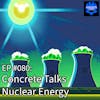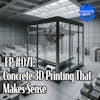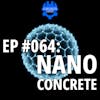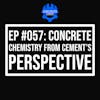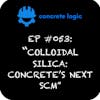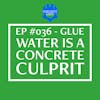EP #085: Dr. Concrete Answers Hokie Queries
In this episode of the Concrete Logic Podcast, Seth and Dr. Belkowitz answer questions from students at Virginia Tech about concrete mix design. They discuss the role of aggregate size in a mix design, its impact on the cost and control of the concrete, and the importance of a well-graded gradation.
They also touch on the use of recycled concrete aggregate and its potential effects on the hydration process. The conversation highlights the economic and technical considerations involved in selecting the right aggregate for a concrete mix.
Additionally, Dr. Jon and Seth discuss the impact of fines in aggregate on shrinkage, the seasonality of concrete work, and the decision-making process for choosing cement types in construction projects. They also share their favorite concrete mix designs.
Takeaways
- Aggregate size in a concrete mix design affects the cost and control of the concrete.
- A well-graded gradation of rock and sand helps reduce the porosity index and the amount of paste needed in the mix.
- Recycled concrete aggregate can have contaminants that affect the hydration process and may require rock washing.
- Aggregate size can also impact shrinkage of concrete.
- Considerations for selecting the right aggregate include economic factors, availability, and technical specifications.
- The fines in aggregate, such as the fine particles that pass through a sieve, can have an impact on shrinkage and other properties of concrete.
- Concrete work is not necessarily seasonal, as there are techniques and materials available to pour concrete in various weather conditions.
- The choice of cement type in construction projects is typically made by the engineer, architect, or project manager based on project requirements and local industry practices.
- Favorite concrete mix designs and job site stories can vary among professionals in the industry, showcasing the diverse and exciting nature of working with concrete.
Chapters
00:00 Introduction and T-Shirt Discussion
10:00 The Role of Aggregate Size in Concrete Mix Design
16:11 The Impact of Recycled Concrete Aggregate on Mix Design
43:14 Favorite Concrete Mix Designs and Job Site Stories
***
Did you learn something from this episode? If so, please consider donating to the show to help us continue to provide high-quality content for the concrete industry.
Donate here: https://www.concretelogicpodcast.com/support/
***
Episode References
Guest: Dr. Jon Belkowitz | Intelligent Concrete | Jon@intelligent-concrete.com
Guest Website: https://www.intelligent-concrete.com/
Guest: Virginia Tech Myers-Lawson School of Construction
Guest Website: https://mlsoc.vt.edu/
Producers: Jodi Tandett
Associate Producer: Gregory Rice
Donate & Become a Producer: https://www.concretelogicpodcast.com/support/
Music: Mike Dunton | https://www.mikeduntonmusic.com | mikeduntonmusic@gmail.com | Instagram @Mike_Dunton
Host: Seth Tandett, seth@concretelogicpodcast.com
Host LinkedIn: https://www.linkedin.com/in/seth-tandett/
Website: https://www.concretelogicpodcast.com/
LinkedIn: https://www.linkedin.com/company/concrete-logic-podcast
[00:00:00] Seth: Welcome to another episode of the Concrete Logic Podcast, and today I got one of my favorites, Dr. Belkowitz. Yay! Long time, man. have a
[00:00:11] Dr. Jon Belkowitz: t shirt, man. This is like my, what, fifth episode?
[00:00:15] Seth: Yeah, you know, I, there's only one t shirt out there, and it, I have it. So I, you're not the only one that's complaining about it.
I gotta work on that. I gotta get, I gotta get a t shirt. No, wait, two t shirts. Josh Bong has a t shirt. Josh Bong, I sent him a t shirt. You
[00:00:31] Dr. Jon Belkowitz: sent Josh Bong a t shirt and you sent me one?
[00:00:36] Seth: I put I posted on LinkedIn I said I would I'd ask the folks that listen to the podcast to do these three things and Josh was the only one That did all three things.
So I sent him a t shirt. Send him a T-shirt.
[00:00:49] Dr. Jon Belkowitz: I think you should do I used to go to camp when I was a kid, and when you went there for five years, they gave you a hoodie. I'm a five-year camper, sleepaway camper. Yeah,
[00:00:59] Seth: You're the, you've been on here more than anybody else, so if anyone deserves a t shirt, it's five times somebody
[00:01:06] Dr. Jon Belkowitz: gets a t shirt.
[00:01:07] Seth: Yeah, I'll get you one, man.
[00:01:10] Dr. Jon Belkowitz: Before we get better than that, we'll sponsor the five year or five-episode t shirt drive.
[00:01:20] Seth: Yeah.
[00:01:22] Dr. Jon Belkowitz: Intelligent concrete sponsored. We'll have an intelligent concrete logo on the back.
[00:01:27] Seth: Okay we'll have to work on that off the air here. But anyways, yeah, Dr.
Belkowitz agreed to come on to help me answer some questions from Virginia Tech folks. The last episode I released 84. I try to answer some of the questions that I could about careers in concrete. And today we're going to answer more questions from students from the Myers Lawson School of Construction at Virginia Tech.
Before we get started, just to remind everybody, there's three things that you can do to support the podcast. The first one is share the podcast. So please share the podcast with a colleague, coworker, whoever. And the construction industry. The second thing you can do is jump on to ConcreteLogicPodcast.com and you can click on the contact button, or you can click on the little microphone button and shoot me a message on any topic ideas or guest suggestions that you have.
And then the third way. Is back on the homepage of the ConcreteLogicPodcast.com. There's a donation button, click donate, and you can give any amount and any amount is appreciated.
Don't worry about the amount. It's just that when you do something like that, I know you're listening and that's all what's about, and we'll keep on going. And do you believe something, Jon? Someone actually did this. That's what I just said. Oh, and they left a message. You want to hear it?
[00:02:53] Gregory Rice: Hey Seth, Gregory Rice here. DCG Construction down in Huntsville, Alabama. Also done some work up in the Carolinas. Um, love your show. Uh, met a few guests that World of Concrete this year. Um, nothing but good things to say about the show has been very informative. Uh, listens to it every week. Um, this is a request for a, uh, potential guest.
I would love to hear from Mr. Dan Baker. Uh, I'm actually, uh, looking for more information on him and maybe some try and get some information from him, uh, about, uh, you know, his road to success in the concrete industry. Uh, I actually own a small concrete company, residential and looking to get more in the commercial space and just, uh, would love to get some information from him, uh, just his road to success, how he did it, what were some major steps that, uh, I might need to take, uh, To try and achieve the same type things.
Um, yeah, so if you would, uh, you're more than welcome to play this on the podcast and I look forward to hearing from you guys. Thank you.
[00:04:09] Dr. Jon Belkowitz: guys. You know, I'm not Dan Baker but I've worked with plenty of companies to help them reach the levels that he's talking about. Mom and Pops, that made the conversion, and the one constant between the different companies that we've been working with for the last 20 years.
Is that involvement, getting involved with the industry and the associations that you want to be part of. It's a low barrier to entry. Everybody's, I don't want to say inhibitions are down, but they're not as, you know, when you go into a conference room, their guard is up. So go to Lunch and Learns that are hosted by an ACI chapter or ACSS chapter.
Join for free, you know, American Concrete Pumping Association, Paving Association, and meet people, and people want to work with like-minded people. If you want to grow, start finding out what the landscape looks like, and who's out there, and what they're doing, and start talking to them, shoot.
[00:05:12] Seth: Yeah. No, that's fantastic. First of all, Gregory Rice, thank you so much for doing that. That was awesome. He also donated to the show, and I made him a producer, I think two or three episodes ago. I just hadn't found a good time, Gregory, to share your voicemail. And I thought today was a great day to do that.
[00:05:31] Dr. Jon Belkowitz: Did you get him a t shirt?
[00:05:34] Seth: You're killing me with these t shirts If that's all it takes to get more people to listen to this show, T shirts
[00:05:41] Dr. Jon Belkowitz: and pizza man, and you're not in Jersey, so I would stick with the t shirts
[00:05:46] Seth: Yeah, but Gregory, thank you so much. Dan Baker he would be a hard get, but, you know, we'll put the bat signal out there for him.
This man, he, you know, he's been working in concrete for 50 years. So I think he's, he's trying to take advantage of retirement he's not really retired, man. He's still out and about and he shows up at the offices across the country and he's still out. He's still there. He's the face of Baker for sure.
[00:06:16] Dr. Jon Belkowitz: I would be willing to bet you a dollar and you let Dan know that you lost his dollar. And remember on the dollar, you're right. Jon was right. Seth was wrong that he listens to your show and you're going to find an email in your inbox here after you release this. Dan, you make sure to remind Seth when you're on the show that he owes me a dollar because he's listening to your show, man.
A lot of people are listening to you. Sure. You've got a pretty big audience, man.
[00:06:47] Seth: Yeah, that wasn't the, that wasn't the purpose, but I appreciate that. I just Wanted to, I just want to make folks. Like yourself accessible to more people because I shared in the last podcast, you know, not everybody has the time or the means to go to ACI conferences or the world of concrete.
So this was a way to share that just like you do on LinkedIn and your outlets. You know, you share your knowledge with folks. So that's awesome. But hey. Let's get to these Virginia Tech questions. You ready for the first one?
[00:07:20] Dr. Jon Belkowitz: I think so.
[00:07:21] Seth: Okay. First question. Yeah. First question is, what does aggregate size do to contribute to a concrete mix design, and does it affect the setting time of the concrete course versus fine in parentheses?
[00:07:36] Dr. Jon Belkowitz: So first thing is. The reason why we use coarse and fine aggregate and concrete, first reason is to make it less expensive. The, that's a two sided coin there. It's not just the expense of the cementitious material because, when it came down to it, if cement was cheap as all get out, we can control that to a certain degree.
But when we look at the hydrated cement matrix the expense comes from when we add a little bit too much water to the concrete in our cement, you know, cementitious segregates from the rock, or there's a hydraulic reaction, or there's a calcium oxychloride formation. It's not normally, and I shouldn't say that all the time, but it's not normally that it's the aggregate that it causes the problem with the fresh concrete.
It's our cementitious matrix. So not only is our aggregate an order of magnitude less, you know, instead of it being 200 to 300 dollars a ton, and I'm rounding things up, it's more of like 10 to 30 dollars a ton. So there's the economic, there's the expense of it. We replace some of the cementitious or the, in our cubic yard, a concrete design, we do the absolute volume method.
There's 27 cubic feet per cubic yard. So we normally have you know, what is it? Four, around four cubic feet dedicated to our cementitious. And then somewhere around 10 cubic feet dedicated to our rock and around seven cubic feet associated with our sand, right? Instead of doing all of that, and that would be associated with cement, that would be extremely expensive.
The other thing is it's easier to control a lower amount of cement content than it is a larger amount of cement content. So that's the first reason why we use rock and sand in our concrete mix design. Did I make sense? Or is that a little confusing?
[00:09:31] Seth: No, I think that makes sense so far.
[00:09:34] Dr. Jon Belkowitz: So what does aggregate size to contribute to a concrete mix design when we, as when I say we, I'm talking about the ready makes producer, the pre caster, the volumetric folks when they purchase rock and sand, they purchase it based on a certain set of boundary conditions.
Chemical properties size and particle size distribution, and that all falls under, I believe it's ASTM C33. Now the funny thing is those rock sizes, it's not a singular rock size, it's actually a well graded gradation. It's not just one size. So it goes from, let's say the 5767 can have a maximum of one inch, and at smallest it can have a certain amount of number 200, But I think it goes down to a number eight or a number nine or some jazz like that.
And all the in between. So what you want to do the best type of design to do, and there's a lot of different models and simulations out there to use. Tyler lays to Laurentian curve is the best or that we most are as most notable, I should say. We try to create a nice gradation envelope.
And what we want to do is. We don't want to use a gap graded or poorly graded gradation, like something that's just one inch. And that's all you get into the core out of the your course. You want a gradation because you want to put as little paste as possible in the concrete because paste often leads to issues and to control that even more, you want to reduce the porosity index of your rock and sand combination.
Okay. Now, before I go any further, do you know what porosity index means, son?
[00:11:19] Seth: No.
[00:11:20] Dr. Jon Belkowitz: Okay, give it to
[00:11:21] Seth: me in layman terms.
[00:11:23] Dr. Jon Belkowitz: I have a room. I'm in my Mexican Casa Comida right now, right? It's a room that has a certain volume to it. If I fill this room with bowling balls Where those bowling balls touch, that's a certain amount of pore space.
Now, if I take half the bowling balls out,
[00:11:41] Seth: and
[00:11:41] Dr. Jon Belkowitz: put in softballs, and I take half the softballs out, I put in golf balls, and half the soft, golf balls out, put marbles in, I reduce that porosity index. And what happens is it makes the concrete easier to control. It's called more robust instead of more sensitive to slump changes or sensitivities to segregation.
And we don't have to use as much paste. So we want to reduce that porosity index and we do that by using different sizes of rocks and things. Does that make sense?
[00:12:14] Seth: Yes.
[00:12:15] Dr. Jon Belkowitz: Okay.
[00:12:16] Seth: That's perfect.
[00:12:17] Dr. Jon Belkowitz: You're perfect. Nah. Does it affect the setting time of concrete? Man, that is not a question a college student should be asking.
That's a question. I told you these
[00:12:34] Seth: were good questions.
[00:12:35] Dr. Jon Belkowitz: That's a question that a Ready-mix provider, an engineer, a contractor should be asking.
[00:12:43] Seth: I'm just wondering if this student this school is really good at getting their students to do internships. And I'm wondering if this person did an internship at a concrete supply or something like that.
That's the only thing I could think of
[00:12:56] Dr. Jon Belkowitz: it
[00:12:56] Seth: or with
[00:12:57] Dr. Jon Belkowitz: a baker.
[00:12:57] Seth: Maybe they were intern with the baker.
[00:13:00] Dr. Jon Belkowitz: Let them know. I'd love to interview them for an internship. Great question. So it shouldn't. In the short of it, it should not have an effect. As it turns out most of the things that we add to concrete that will affect the hydration process, they fall under ASTMC 494, which is a chemical or is a specification for chemical admixtures for concrete, right?
So anything that affects the hydration process really has to go through that. Process. It can't be considered an aggregate. Now, that doesn't mean aggregate won't have an effect. As it turns out, this conversation wouldn't have been a big deal 20 years ago. I could have just said, nah, that's fucking ridiculous.
Throw out your rock and sand and get something new. As it turns out, we're getting Less of a variety of rock and sand here in the U. S. We have slim pickings. I'd love to do a conversation about that on a daily walk through New Jersey. You can actually see in the sidewalks how rock has changed over the decades throughout the different subdivisions.
But not only that, more so now we're using recycled concrete aggregate. As our course and fine aggregate and concrete in the unfortunate reality is, especially if they're presoaked, which we recommend a lot of those carry contaminants in the form of lead, arsenic, mercury you know, tri calcium silicate, di calcium silicate, retarders, et cetera, anything that was left in the poor water solution that might be in a dry state when you mix it into the concrete, just like if you had.
Concrete residue in it that was set up to, you know, take off like a bat out of hell in your mixer. You want to do some type of a rock wash before you go to your next batch. You can have the same impact from your recycled concrete aggregate. We're going to have an accelerating or retarding effect, or even if there was a bunch of.
What was it? Calcium chloride based the icing salts in there that can have a negative impact on the concrete too, which of course is outside of the setting time question, but it's still germane to this topic.
[00:15:25] Seth: And what about I don't know if this person was trying to ask this question, but aggregate size as far as shrinkage of concrete too.
Oh, heck
[00:15:34] Dr. Jon Belkowitz: yeah.
[00:15:34] Seth: Heck yeah.
[00:15:35] Dr. Jon Belkowitz: Heck yeah. Anything. Thanks. So You know, that's a man. That's not a question. A kid should be asking.
[00:15:44] Seth: The
[00:15:44] Dr. Jon Belkowitz: question was, will fine aggregate or the fines in the aggregate have an impact on shrinkage? Heck yeah. Yeah.
[00:15:51] Seth: Yeah. Fines versus, yeah. Fines for course versus fine.
[00:15:55] Dr. Jon Belkowitz: Oh yeah. Yeah.
[00:15:56] Seth: Yeah.
[00:15:57] Dr. Jon Belkowitz: Course versus fine. And when you say fines, when they say fines, I'm talking like my minus two hundreds. And that is a, you know, the really fine stuff that goes through your minus 200 sieve.
And we want to know that stuff. That's part of our C33 testing that we do. But it's not only that, it's also the claim content. What is the fine made up of? Because I said it'll have an impact on shrinkage. It's going to have an impact on a lot of things. What we worry about from the fines, Is the specific surface area that's going to monopolize either water, but more importantly paste, both of which were either meant for the workability of the concrete or the hydration process, or it's going to add to volume change.
And, you know, shrinkage early on, whether that's plastic shrinkage issues or maybe not cause plastic, but what's the word exacerbate plastic shrinkage. And then we can also have some issues with, because it has a higher water demand, people add water to the mix. And then because now you're adding more water to your glue, when you have the evaporation of that water, you'll have the volume change for that.
And that will cause shrinkage.
[00:17:18] Seth: Perfect. All right. I think, yeah, like you mentioned before we hit record that question, we could probably spend a whole episode on yep. Yep. We'll move on to the next 1. whoever wrote in that question. That was an excellent question. Thank you for writing that in.
Next question is concrete work seasonal. And if not, how is concrete affected when poured in the winter compared to the summer,
[00:17:42] Dr. Jon Belkowitz: you know, the good ready mix provider. And I shouldn't say that, but it is true that the good Ready-mix provider finds a way to sell concrete in every season. You know, I have a buddy who owns four Dunkin Donuts, and his dad passed away when he was 16 years old.
He managed one Dunkin Donuts. So he had to take over the family business. He was the oldest son and man, O'Shevitz, did he lean into it. And I remember Whitney and I used to do homework in there when we were still, you know, when I was still doing my PhD and she was doing our baccalaureate when we were living here.
And it was always like Monday night. We would hang out there for date night and get, spend three bucks on coffee and a donut. And Tony would come out and we'd talk to him and we'd be sitting there Monday night and he's like, how the heck do I get people in here on a Monday night? Do I have a live band?
Do I like, and this is a Dunkin Donuts. It's the same thing. We are in, when you, when whoever's asking this question, either work for a concrete company, studied what a concrete ready mix company does, or wants to work for a concrete company. And this question is all about what you get into when you own a concrete manufacturing business.
And that has changed over time. It used to be that. You were in the business of making and delivering concrete, right? Whether your family business or a family business with a bunch of plants. Now that has changed. We're no longer in the delivery business, and it happens to be that we're delivering a perishable material.
Nowadays, we're in the risk management business. Now, if you're a large commercial company you know, one of the big colors, blue, red, yellow, green. And you're selling 1. 2 million cubic yards a year and you buy into that, you don't have to really worry about that's taken care of for you and you just have to consistently make good concrete delivery.
But if you're asking for a mom and pops, it's called diversification. This is not the frickin 1980s and earlier. We don't have 95 percent of our people using water and cement and a little bit of lamb's blood there. There was a wonderful presentation by Rich Szescy years ago that 90 about getting rid of the 300 rev rule in ASTM C94 and the 90 minute rule, which by the way, no longer exists in ASTM C94.
It's totally up to the ready mix provider and the person buying the concrete, how old the concrete is and how many revs. And that's who you need to have on your show is Rich Szescy to talk about that jazz, but right now, there are so many chemicals out there and they're so inexpensive that you can design your concrete to take off.
In negative fricking 35 degrees Fahrenheit and up to 135 degrees Fahrenheit. And I'm not trying to pull any chains here, but there are people that have to do that. There's liquid nitrogen you can put on top of concrete. There's calcium nitrate, sodium nitrates, sodium thiocyanates, there's polycarboxyl ethers, polymers, like this just.
There's even formaldehyde that's used in concrete. There's just so many bells and whistles. You shouldn't have a season. Now, the second thing is now that I have the concrete, how do I reach the people and let them know? And that's just marketing. That's how do I reach my demographic. And with this thing, you know, with the phone, like there is, there's a company out there that has an iPhone app and an Android app.
That helps people who have concrete and who have trucks in the yard get in touch with people Who need to buy concrete, but they're normally really low on the list with the high end ready mix providers You know what I mean? Like when you're not a baker and you're a Jon Belkowitz I pour slabs You don't get to buy, you don't get to talk to the frickin dispatcher first thing in the morning You got to wait until they call you back.
There's an iPhone app and it's not my job to tell folks who's there are because there's a number of them out there, but Ready-mix providers work with this iPhone app company and it's like the Uber of iPhone or of the Ready-mix industry.
[00:22:23] Seth: It's
[00:22:23] Dr. Jon Belkowitz: pretty sweet. So if you're a good Ready-mix provider, season should not fricking matter.
You got to diversify the type of concrete you're selling because there's always basement concrete. There's always underground concrete. There's always concrete poured at night poured in the morning underground or.
[00:22:47] Seth: Yeah,
[00:22:47] Dr. Jon Belkowitz: did I answer your question?
[00:22:49] Seth: Yeah, and I'll add on the contractor side.
Yeah, we, as a contractor, you only make money when you're pouring concrete. So we got poor year round and like Jon was sharing, there's different ways you can You know, acclimate the concrete for whatever environment you're gonna be in. So during the winter, there's admixtures that we utilize.
Also the concrete supplier, they switch on hot water as well. So that, that helps pour during the winter. And then as far as protecting it, once it's down we use blankets. Sometimes if it gets really bad, you know, you have to tend in the building and heat the building when you're pouring concrete.
So those are things we do in the winter. And then during the summer, which is prime Concrete pouring time. That's when most people get or most of their concrete poured is during the warm months. We. We normally pour at night. So you pour at night and then the cooler temperatures. And then again, the concrete supplier they turn on cool water during the yeah the, during the warmer months, at least they charge us for it.
I assume they're doing that. And then and then Dr. Belkowitz mentioned a slew of things like the nitrogen and all that. If things get really bad, I think our 1st step would be just bags of ice. So you'll see bags of ice being thrown into the mix and things like that. But then again, you gotta pay attention to that.
Cause that's contributing to your water cement ratio there. Those are things that you can do. But yeah, you got to figure it out. I poured I personally been on projects during you know, when it's super-hot
and
super cold, I've poured concrete and snow and all kinds of craziness.
But
[00:24:28] Dr. Jon Belkowitz: I think where it comes into. The question was, how do you round out your profit margin? Is there seasonal, whether you're the contractor or, and it's learning different techniques. We just worked with, I believe the Illinois Ready-mix Concrete Association. And we looked at like different techniques for contractors and how much it costs relative to the cost of a 40 foot by 40 foot concrete slab for different preparation techniques.
So for instance, if they do what's it called driveway 40 foot by 40 foot slab, you know, to replace that, rip it out and replace it normally cost two and a half times the original cost. Now, to get the chemical admixtures that would give you a little bit of resiliency to a cold snap is around somewhere between 7 to 10 percent of the original cost of the concrete.
You know, if you're using some really crazy stuff. Now, if you want to get into a little bit more technology, there's hydronic heating and cooling systems. So as a contractor, instead of just putting curing blankets or heating blankets, like if you look at the work done at the Potomac River, they had to control the heat that was on top of the concrete, not only to cure the concrete, but also to rip the blankets off.
Sooner, so they also not only put in hot water, but they put in, you can put in cool water to get the temperature to the ambient environment faster because if you put on curing blankets and your concrete temperature gets up to 70 degrees Fahrenheit and it's 20 degrees out and you rip off the blankets.
What happens?
[00:26:12] Seth: You're shocked in the concrete.
[00:26:14] Dr. Jon Belkowitz: Cracks.
[00:26:15] Seth: Yep.
[00:26:17] Dr. Jon Belkowitz: Okay. So yeah, it's all about learning different techniques, whether you're a provider or the manufacturer.
[00:26:23] Seth: All right. I think we nailed that one. All right. Third question. Probably the last one for today. Do engineers, this one's going to be a long one.
Do engineers choose which type of cement? For instance, type one, type two, et cetera, to use before they design the structure or is that decided by someone else? I'm laughing. Sorry. Before they design, if they do choose the cement type, how do they choose which type to use? And this there's a name attached to this.
This guy's got a really awesome name. Guess what it is. Joseph
[00:26:59] Dr. Jon Belkowitz: Rout?
[00:26:59] Seth: No. His name is Seth Alverson. What a great name. Construction engineering and management graduating this year.
[00:27:07] Dr. Jon Belkowitz: Congrats, buddy. Welcome to the industry. So this is going to come out tough. Seth, I apologize in advance. Is that why you're laughing?
Cause of the way I'm going to react to this question.
[00:27:21] Seth: You could take this question a hundred different ways. So I can't wait to hear it. I'm taking it two different ways. All right. Go for it. You answer.
[00:27:28] Dr. Jon Belkowitz: Fortunate reality is we cements anymore. We have since switched over to ASTM C595. What's the other one called?
The 1157 cement. So you can ultimately go in the same direction, but the same monikers don't exist, the type one, two, type two, type three, four, five, six, seven, Five or what was dick burrows. He wanted to do a type six cement. We haven't been making type four cement in years and I still think here in new jersey.
We still type one two Freaking Home Depot. I bought bags. I'm just buying bags and I’m storing them I'm putting one up in a frame. It's this type one two c 150.
[00:28:10] Seth: It's like gold bars.
[00:28:11] Dr. Jon Belkowitz: Oh, it's amazing and in some parts of California, I believe they still sell the type but normally you're going to find either the type one L or the type.
What is it called 1 P or those types? So that's the
[00:28:27] Seth: 1st thing as the engineer.
[00:28:35] Dr. Jon Belkowitz: If I say it, it's going to come out rude. And I do it, say it, no F and apologies. Engineers don't know, you know, engineers don't know concrete. No, and I'm going to get pushed back and I don't mind. I would love to be on another podcast where I talk about there's I was recently invited out to the Portland cement association.
I had it declined because they're fortunately not paying our way. And we just, you know, it's an expensive fricking trip. But the question was, what is, you know, type one L this transition doing to the industry? And. You know, when you look at the panel the people on the panel who are answering this question for 150, 200 people, none of them are civil engineers by trade, they might have that the letters after their name, but they are not a professional engineer who sits in an office and is designing reinforced concrete, those people.
They have no clue about concrete mix design. So I think that question is better targeted for, or it's the question is a little bit different. And if you don't mind me changing the question the 1st question is, who makes that choice on the type of cement? And the second answer is how do they make that choice?
And it comes down to the person who is most closely associated with the schedule of the project. Now, in some cases that might be the civil engineer, that might be an architect, and that might be a project manager who has no. I've worked with project managers that were English majors in college. They had no concrete, no chemistry, and they've been designing concrete for 15 to 20 years, and they're telling what the Civil ENG engineers to use.
Now, there are special cases, not the 80% of the concrete that is used and made every day, but there are the 20% I'm using Pareto's Law where you have to bring in special cement, whether it is a special cement, a special cementitious. But normally, and it's probably more than 80 percent of the workforce of the industry, that engineer or that architect or that ready mix provider is used whatever is available in the local industry.
Now, that could be based off of what the DOT engineers are setting up as specifications and what folks are going after to answer many problems that they have. So for instance, in Colorado, we have a lot of sulfate in our soils. We have a lot of ASR to deal with. So we need a type one, two cement or something equivalent.
We need some type of resiliency to alkali silica reactivity. So it's not just the cement we're using, but it's also the pozzolanic materials, whether it's fly ash, silica fume, or some bastardized version of a site sludge that we call reclaimed ash, and it's really just frickin garbage that's diseasing our concrete.
But hey, if you want to tell people to use it, it's CEDAW. I guess it's going to fly, and people are going to sell it. So I guess I answered that, that question in a roundabout way and a little bit of cynicism. But like the aggregate question, that answer has changed in the last 20 years. And Seth, I believe your name was, I remember when I first got to Aviano Air Base, Italy, when I was 18 years old.
It was my first fricking job. I got there at eight o'clock at night or seven o'clock at night. It was my first day there, Seth. And they gave me the radio for in flight emergencies. I'm not talking like, you know, Cessna C one 70 twos, I'm talking about F sixteens, EA six Bs, F seventeens, you know, B one a lancer the bone shit with like smoke in the cockpit, cherry red brakes hung missiles.
Everybody went and got toe up from the like just drunk. And not only did I hide an IFE an in-flight emergency that night. I also had a generator for some type of payload site that it ran out of fuel and I had to go find the tank. Never worked at a diesel tank in my life. It was underground and I had to fill it up myself.
You are getting Seth, my friend, my soon to be colleague, you are getting into a very exciting time here in the industry. The way you answer that question, the way you choose is this cement going, let's say you work for a ready mix provider and you are that, One at a 10, 000 engineers that does, or CIM students or concrete technician who does design mixes.
Either you hire a third party to get samples of your rock sands and your chemicals, run them together in a bunch of ASR sulfate, compressive strength, fresh property tests. And see if they make your property or they, what am I trying to say Seth meet your engineering specifications that your engineer is requiring on that structural design and normally what they're requiring 28 day to 90 day strength, Aaron trained, good Lord, they might require a slump when they have no clue what a slump is.
And then there might be a cement content in a water cement tissues ratio content, but when it comes to. Sulfate attack, you as the producer is going to have to make that decision. And you have a lot of tools. It's just, unfortunately, now the decision making process, it's not as
[00:34:42] Seth: cut and dry and easy as it used to be.
Well said. No.
[00:34:49] Dr. Jon Belkowitz: Engineers, shame on you. Shame on you engineers.
[00:34:57] Seth: Yeah. You got to go back to the last episode Jon, Dr. Belkowitz and I did you can. Listen to him go on his tirade on engineers. Can I
[00:35:07] Dr. Jon Belkowitz: recommend you add something to the end of your show to end it on a good note?
[00:35:12] Seth: Yeah, you can Go ahead.
I was just gonna thank we're that was gonna be the last question for today but is there something you wanted? You want to add before it?
[00:35:22] Dr. Jon Belkowitz: Yeah. Yeah. Yeah. Yeah. What's your favorite concrete mix design that this is what you should ask. Listen, the last two shows that I've been on, we've ended off with me having like heart palpitations and getting angry.
I'm sorry. Yeah. Whitney doesn't want me to do the show. Cause I got to go for a stress test after this. I recommend that you choose something. And I would love it to be, what's your favorite concrete mix design or what's your favorite concrete ad mixture? I really love the question of what's your favorite concrete mix design and why?
But your favorite concrete job site, concrete story, your craziest concrete story concrete mix story. Those are really fun questions, and it should only be like a 45 second answer.
[00:36:09] Seth: Yeah. Before we get to that, I just want to make sure I thank Ashley Jonson. She's associate professor at the Virginia tech Myers Lawson schools construction, engineering, and management.
These questions came from her students. So thank you, Ashley. Appreciate you doing that. Gosh, no, she doesn't have a t shirt, man. Good grief.
Hey gosh favorite mix or job site? That's, you know, you say it should be a short answer, but it's not a short answer. I don't know a concrete guy that's been in the business for a good while that has a short story about something. It's not a story. I said,
[00:36:46] Dr. Jon Belkowitz: what's your favorite mix design?
[00:36:48] Seth: I don't okay. My favorite mix design. I can't, I don't remember all the details of it, but it was something that we did on a particular job. I can't say everything about his NDA job, but it had it was like 20 pounds of fiber. It was like a 5, 000 pound mix. We had to pump it through 600 feet of line.
And when I saw this. Requirement I was like there's no way this can happen. There's no way this can happen, but We did it and there's people that I would still want to get on this show that were a part of that and yeah So yeah, cuz I you read that on the spec and you're like this is not even possible You can't do this and then it then you do it and you're like and you do it a lot.
We did it a lot It was awesome. But yeah, that would be my favorite one that comes top of mind.
[00:37:43] Dr. Jon Belkowitz: I started writing a book with Brian Green called The Wild Frontiers of Grouting. And in that book that, God willing, we're still writing, there are stories like, That's impossible. You can't do that. And the way you remember those details says a lot about you and what your job was in the industry, recognizing those details.
For me, my favorite mix is fast track pavement. You know, you gotta have workability for 90 minutes to two hours. And then two hours after that, you got to drive on top of it. You're balancing not only the inconsistencies that you might have with the end user and the traveling time. But also the strict deadline of opening up to traffic, recognizing that the D.T. doesn't care. And if you're a minute late, it's the same thing as being an hourly. The amount of cement, you know, anywhere between 750 pounds to 1000 pounds of cement with a water cementitious ratio of around 0. 37 to 0. 35. With a high range water reducer content of about 10 fluid ounces per 100 weight, high range or hydration stabilizer anywhere between 0. fluid ounce per 100 weight, and your accelerator anywhere between 45 to 155 fluid ounces per 100 weight. From the plant, you can get that to last. Two hours before the slump is gone. Sets up like a bat out of hell. Frickin look, 45, or 3, 500 to 4, 500 PSI. Four hours from when water touches cement. Creamy and dreamy, easy to close up and finish.
[00:39:31] Seth: That's right. That was 30, 45 seconds there. Nice job. You never fail to disappoint, man. Every time you come on here, you're awesome. Thank you. I probably should get a t shirt. You should probably get a t shirt. You should probably get a t shirt. All right. This is where we're going to stop today.
We could probably go on for hours, but this is where we're going to stop today. Thank you again, Dr. Belkowitz. Appreciate you coming on here and helping me with these questions. And folks, until next time, let's keep it concrete.
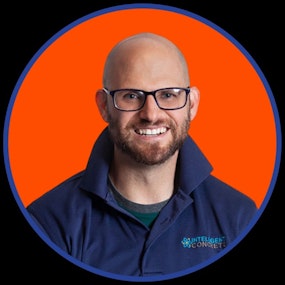
Dr. Jon Belkowitz
Jon Belkowitz is the Director of Research and Development at Intelligent Concrete, LLC and Chief Technical Office for Surface Tech’s Concrete Division. Before forming Intelligent Concrete, LLC, he served in the United States Air Force from 1996 to 2006 specializing in Civil Engineering. His tour of duty introduced Dr. Belkowitz to a wide variety of concrete types and uses which were dependent upon the engineering practices of different host nation forces, developing nations, and disaster repair initiatives. Jon has worked in private testing laboratories on structural engineering proposals and materials development projects to include the application of nanotechnology in concrete. Dr. Belkowitz has worked as a consultant on projects in the United States, India, Turkey, Africa, Italy, and Germany.
Specialties: - State of the Art Testing and Consulting
- Design and Development of Concrete
- Marketing of New Technologies
- Standardized Tests for the Lab and Field
- Forensics Analysis on Failed Structures
- Educational Seminars - Basics to Advanced









